The Philippines appears to be the most intimidating destination for digital nomads in South East Asia. In fact, there are so many bad reports of the country that it put me off visiting for years. The complete nightmare that people allude to never materialized, what I found was the most underrated place in South East Asia.
The Philippines is an island nation stuck in the middle of the ocean at quite some distance from the rest of Southeast Asia. It is, for the moment at least, one of the least visited countries in the region. It has a lowish cost of living and a peculiar culture which is a blend of both Asian and Western influences.
The best thing about the Philippines from a Western digital nomad’s perspective is that nearly everyone speaks fluent English. This makes visiting the country much easier than some of the other countries in the region.
The second best thing is the incredibly friendly visa regime. If you’re looking for somewhere you can stay for a reasonably long period of time without hassle – the Philippines is number one on our list in South East Asia.
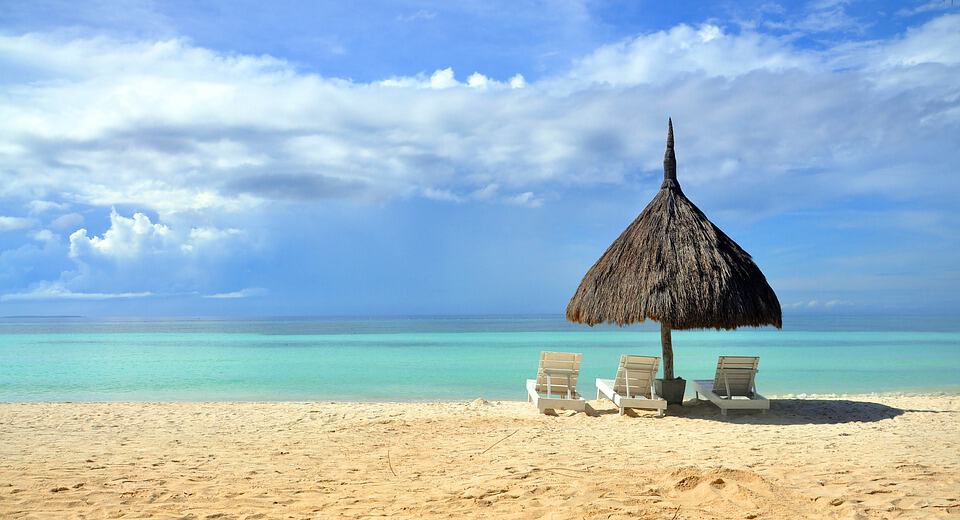
Table of Contents
About This Guide
We only do guides to places that we’ve visited and spent a reasonable amount of time in.
This is a country guide and not a city guide. We will review individual cities in addition to the country itself. The objective of this guide is to give you a general overview of what it’s like to live and work anywhere in the Philippines.
It’s laid out in a way that’s designed to address the specific concerns of some (or all) digital nomads; if there’s a section you don’t need, feel free to jump over it.
Philippines: A Rough Destination For Digital Nomads?
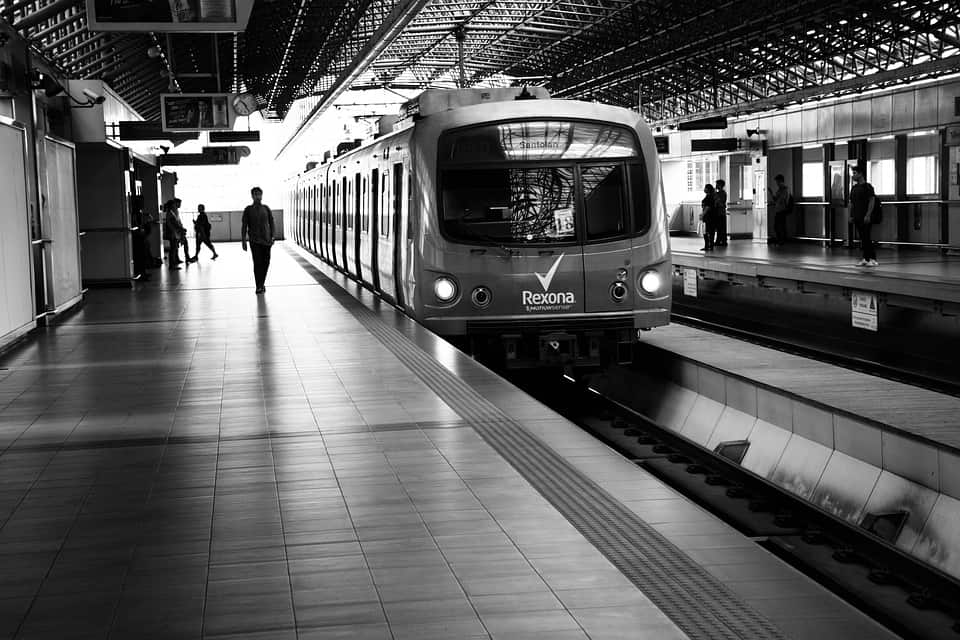
There is no doubt about it if there’s a nation in South East Asia to get nearly nothing but bad press – it’s the Philippines.
If you believe what you read, you’d think that pitched battles were taking place on every street corner and where they weren’t – there were people stealing your stuff.
This is all nonsense.
That’s not to say that the Philippines doesn’t have its challenges and yes, petty theft is common – though in 2 years in the country (for me – Megan grew up there), we’ve never even had someone say a threatening word to us.
Nor have we ever witnessed any violence.
Instead, we found that most people are incredibly friendly and helpful and that as long as you’re willing to pay a steep (compared to the rest of Southeast Asia) price for accommodation, safety is pretty much guaranteed.
There’s a lot of country to choose from in the Philippines but before you book your flights there’s one thing that digital nomads should be concerned about in the country and that’s the quality of Internet services (see the Internet section below).
What Do You Want From The Philippines?

There are thousands of islands in the Philippines but that doesn’t mean that you can just rock up and stay on any of them.
Most first time visitors are going to choose to be in one of the following: the big cities of Cebu, Davao, and Manila, the popular beach destinations (such as Palawan and Boracay), or if you’re looking for a break from the incessant heat of this region – Baguio is becoming a very popular option as it is cool (without being “cold”) all year round.
The Southern-most part of the Philippines is Mindanao and apart from Davao, which has become something of a digital nomad favorite, the rest of this region is considered to be “off-limits”. There is an ongoing conflict between the Muslim people indigenous to the region and the government of the Philippines.
Travel in Mindanao outside of Davao incurs a risk of kidnapping and/or violence. That’s not to say this is guaranteed but it’s a risk and one that we can’t advise you to take.
The central region of the Philippines is the Visayas and its biggest city is Cebu, the second largest in the country, it is also home to Dumaguete which is considered to be one of the best cheap retirement spots in the world and is also appealing to many digital nomads.
The North, Luzon, is home to Manila which is one of the world’s largest urban conglomerates. It’s best to approach Manila as a bunch of big cities glued together rather than as one individual city.
There are beach resorts all over the country, which you’d expect in a tropical island nation, and finding the right one to suit your tastes should be straightforward. Be aware that there is a general move to improve the quality of beach resorts in the Philippines and time may be running out for cheap beach breaks.
Baguio is up in the mountains of Luzon. It’s cool all year round and on the doorstep of the UNESCO world heritage site rice terraces which are among the best in Asia.
Getting Into The Philippines – Visas And Other Stuff
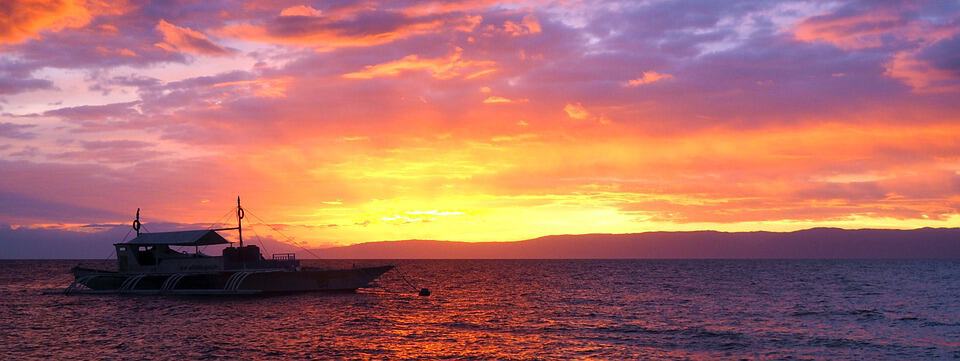
You can only board a flight to the Philippines without an onward ticket if you have permanent residency. Tourists and other visitors will need an onward ticket which they will be asked to present at the airport before boarding the flight and, possibly, at immigration when they land.
Failure to present an onward ticket will lead to being refused boarding. It’s really that simple. It is the most inflexible ticketing policy in the region. It probably has to do with the fact that the Philippines is quite a long way from any other country in the region and thus deporting people who overstay is much more expensive.
The good news is that despite that minor hurdle; the visa regime in the Philippines is incredibly foreigner-friendly and you can stay for up to 3 years with very little effort on your part.
Before you travel you can apply for a 2-month tourist visa at your local Filipino embassy. Alternatively, as long as you qualify for one (all Westerners do), you can jump on a plane without a visa and pick up a 1-month tourist visa exemption on arrival for free.
Once you’re in the Philippines, you can extend your tourist visa (or visa exemption) at the local immigration office, this must be done on a semi-regular basis (this varies between offices) and you must also apply for an Alien Resident Card (ACR) if you intend to stay longer than 2 months.
This is a completely painless process. Filipino immigration is amongst the most helpful and kind we’ve encountered anywhere. Everyone speaks English too, so if you need something explaining to you -they will do so without any issues at all.
However, there are two things you should be aware of about the Philippines and immigration.
The first is that you are expected to dress respectfully to attend immigration. Each office has a different idea of what this means. In Makati, for example, you must not wear shorts, you must not wear sandals and you must not wear sleeveless t-shirts. In Cebu, nobody cares at all what you wear. There are at least two regional offices, however, where if you’re not wearing trousers, shoes and a shirt with a collar – you’re not getting served.
The second is that if you stay longer than 6 months in the Philippines – you must get permission to leave the country before you can fly out. This requires a visit to immigration, at least one day before you fly, to process an exit clearance certificate. This certificate, unlike pretty much every other encounter with immigration, also needs you to supply passport photographs.
Finally, while it’s not immigration-related – you will also be expected to pay a “terminal fee” in the airport, in cash, when you leave the country. If you leave with a Filipino national, they will also need to pay a departure tax in cash at the airport before they can fly.
Language In The Philippines
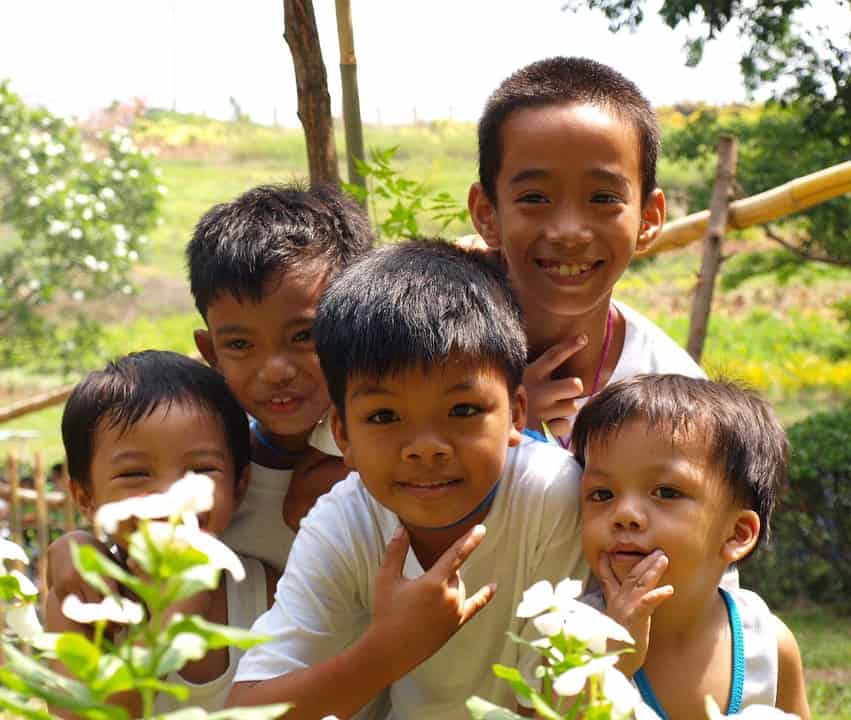
There are 3 official languages of the Philippines; Tagalog (the main language of the Northern region), Cebuano (the main language of the central region) and English. Almost all Filipinos are fluent in at least 2 of these languages and most are fluent in all 3.
This means that there is very little incentive for most digital nomads to learn the local language. This is in stark contrast to many other countries in the region. At no point in 2 years in the country could I not make myself understood in English.
Megan is Filipino and we converse solely in English. There is never even a moment when she drops a Cebuano word into a sentence (unlike most ESL speakers) though we do have some amusing moments when an English word has been “borrowed” by Cebuano and had the pronunciation altered.
As you’d expect from a former American colony – the prevalent version of English in the country is American-English.
It’s worth noting that there are probably over 100 languages used in the Philippines and each island or tribe has its own language. Sadly, many of these are dying out in the modern era as homogenization around the 3 official languages of the country makes life easier but less interesting.
Internet In The Philippines
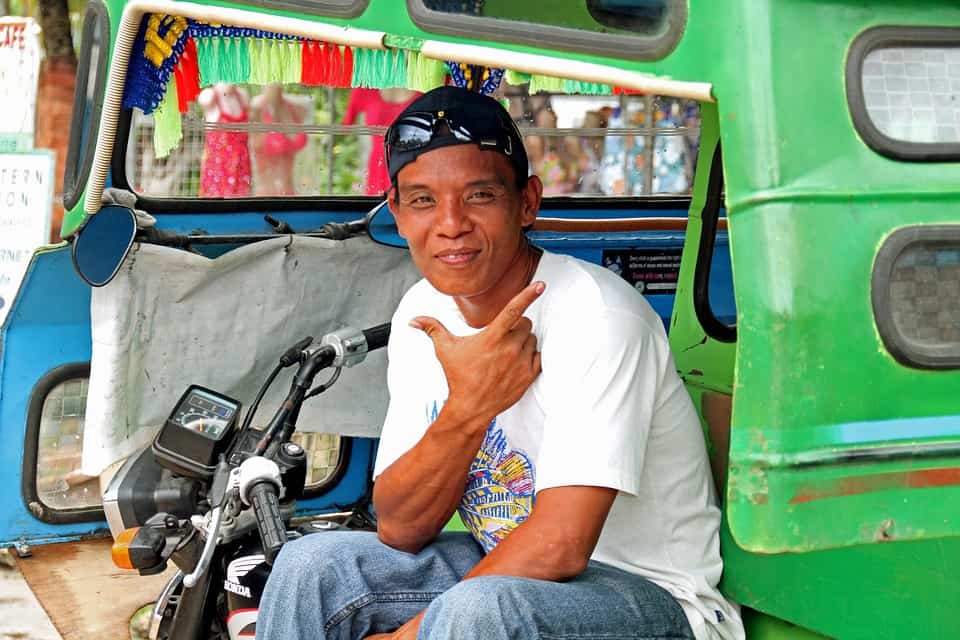
We love the Philippines, but we don’t love the Internet. This is where digital nomads are going to have take some time and think about how they will approach travel in the country.
Let’s be blunt about this – the Internet access sucks in the Philippines. The country has two ancient telecoms behemoths which treat the people as a cash cow. They don’t invest in their services without being compelled to do so.
This is not a huge issue in Cebu or Manila. You can find working Internet of up to 20 MB (though most places have slower speeds because not only is internet bad in the Philippines, it’s also ridiculously expensive).
However, you will want to identify another place with good (or acceptable) internet services for when the internet wherever you are, inevitably fails. We had two separate internet lines in our apartment in Cebu and I still found myself in a co-working space every 4-5 weeks for a day or two.
4G Internet services are also a mixed bag. No single operator offers a reliable service across the country and you may need to try several SIM cards to get one that delivers. It’s also worth noting that mobile internet is even more expensive than fixed-line and… can often be so slow that it’s useless.
Before you book anywhere outside of the major cities in the Philippines – find an expat group on Facebook and ask about the local internet services and get the lowdown on where exactly you should live to get decent internet.
You can forget getting decent internet on most remote beach islands. It’s simply not happening.
There is hope for the future. A Chinese firm has been granted the country’s 3rd license and been tasked with shaking things up. But we wouldn’t advise holding your breath for this.
Money In The Philippines
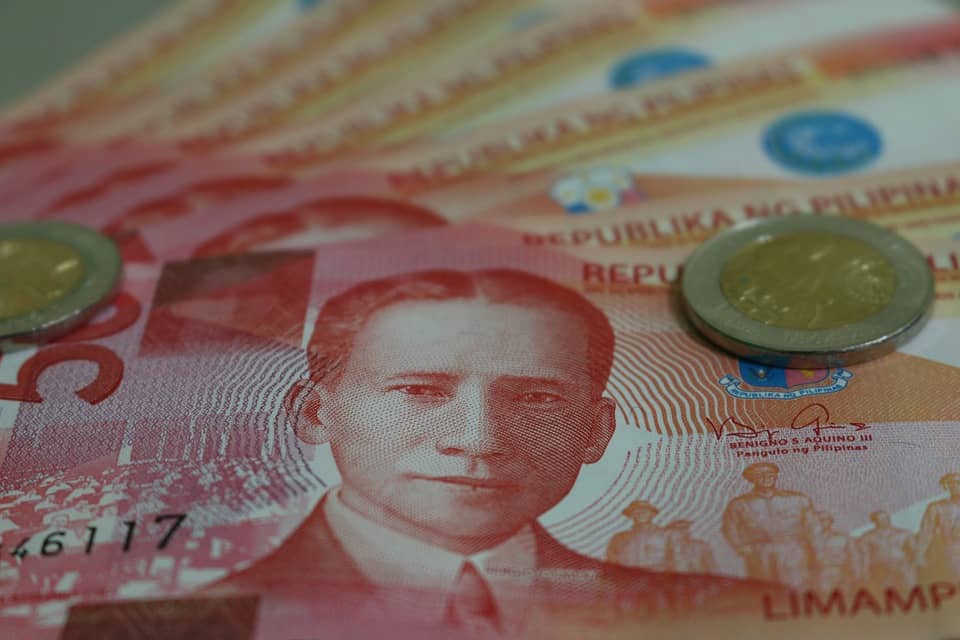
The currency of The Philippines is the Philippine Peso. The “typical” range for this against the US dollar is about 40 – 60 Pesos. The currency fluctuates wildly and it’s hard to develop an exact monthly budget when it’s possible that your cash will be worth 20% more or 20% less depending on when you visit the ATM.
There are ATMs everywhere in the country. Sadly, with the exception of a few HSBC machines – they all have a maximum withdrawal limit of 10,000 Pesos per transaction. Given that they are going to charge you $5-$6 to withdraw each time, this can add up pretty quickly.
You can open a bank account reasonably easily in the Philippines, as long as you have an ACR card (see visas above), but you may need to visit several different banks and branches to do so. However, banking in the Philippines is particularly poor value and it is very hard to change money from Pesos back into a foreign currency.
PayPal can be linked to a Filipino bank account and there are many other ways of transferring money into the country including Western Union. Oddly, the Philippines has also adopted several crypto wallet providers and you can even pay your 7-11 bill in Bitcoin if you want.
Electronic goods attract a huge tax premium in the Philippines, that can mean it’s better value to shop elsewhere in the region.
About paying by card: Credit cards are not accepted everywhere but will be accepted in malls, hotels, etc. however, they may attract a surcharge of up to 3% for their use. This is fairly standard across South East Asia.
Finding Accommodation For Digital Nomads In The Philippines
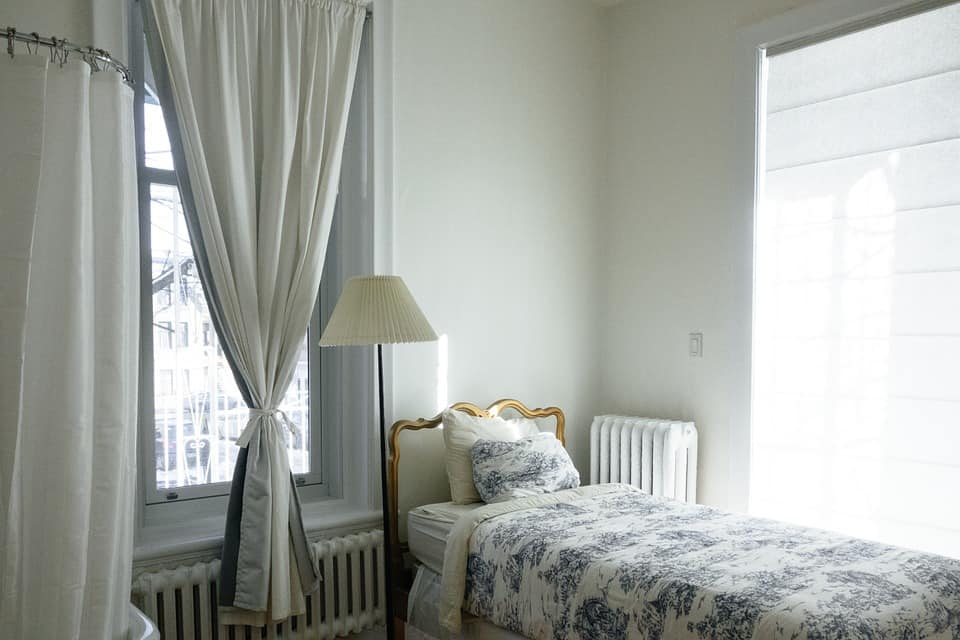
Good accommodation in the Philippines comes at a huge price premium compared to some of the other South East Asia countries.
Yes, you can rent a house for next to nothing but nearly everyone who lives in a Filipino house gets burgled at some point or another. It’s also worth noting that the majority of homes in the Philippines are rented without furniture.
That means apartment living for most digital nomads and these are both expensive and small. We’d estimate that you ought to budget $500-$600 a month, minimum, if you want to live in a big city in the Philippines and not much less if you want to live elsewhere.
Cheap accommodation is available but it’s often truly nasty. Cockroaches and rats are common companions in $50-$150 a month apartments and you may be expected to share the room with other people too.
Hotels and hostels are also more expensive in the Philippines than in the rest of Southeast Asia (apart from maybe Singapore) and serviced apartments are almost non-existent outside of Manila and very expensive there.
If you value space and want a large place – you will quickly see rents in apartments fly up to the $1,000+ level in Cebu or Manila.
Our 44 sqm 1 bedroom apartment in Cebu was $800 a month plus bills. On a floor area basis, this is the most expensive place that we’ve rented long-term in Asia.
Despite being a serviced apartment, we were still required to buy bedding and bathroom linens. Something that simply wouldn’t happen in Thailand.
2-month security deposits are very common in the Philippines and may or may not be returned at the end of your stay.
Anyone can enter into a rental agreement and you do not need a particular visa to do so.
Airbnb is somewhat overpriced in the Philippines but can be the easiest way to find an apartment if you’re not staying for long.
We were pleased to find, however, that the landlords we dealt with all charged the meter price for electricity, water, etc. We weren’t pleased by the cost of electricity though – it’s very expensive.
Co-Working Spaces In The Philippines For Digital Nomads
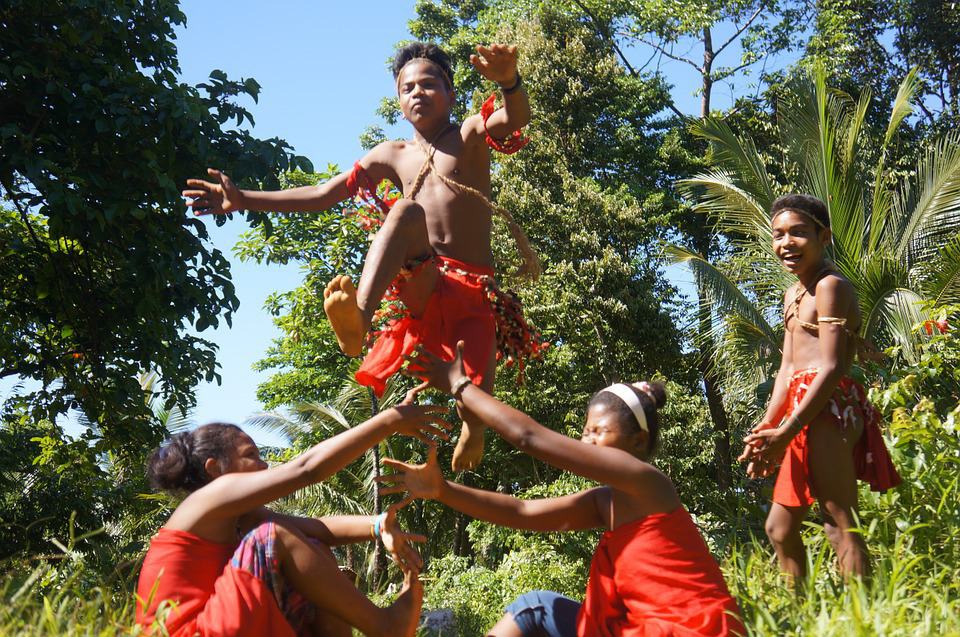
You might think that poor internet services would deter co-working but quite the contrary. Filipinos love co-working and spaces are common in nearly all major destinations; however, many of them are at the mercy of the same capricious internet gods as your home connection is.
The exception to this is in Cebu and Manila. The co-working spaces in these two venues will have reliable and fast internet. We found that it was easy to get 80 MB+ if you need it.
The downside, however, is that co-working is not cheap. $150/month seemed to be about the minimum payment for a decent space and you need to sign a very long contract if you want out of hours working. We also found that most spaces consider anything beyond say 9 – 5 or 8 -6 “out of hours”.
The Philippines also has a huge number of public holidays and co-working spaces shutter their doors for these holidays.
You can find free day trials online for co-working or even be rewarded with the occasional free day from the co-working space for regular visits.
One thing we really liked was the professionalism of these spaces. People working in them weren’t showing off their “digital nomad badges” and the majority or co-workers were local.
Free coffee is common and many of the co-working spaces hold professional networking events, free food days, etc.
While it is true that coffee shops and café will generally have free Wi-Fi, it’s worth noting that for most of the day this will be terrible because everybody in the Philippines will be in there using the free Wi-Fi too.
We found that we had to go to a 24-hour coffee shop at about 4 a.m. to get a decent a day’s work done in a coffee shop. We wish we were joking about this.
The Philippines is the one place in South East Asia we broke our “no co-working space” rules on a regular basis. With the unreliability of home Wi-Fi connections, it’s nice to have a fall back plan and coffee shops just weren’t very practical.
Food And Drink In The Philippines
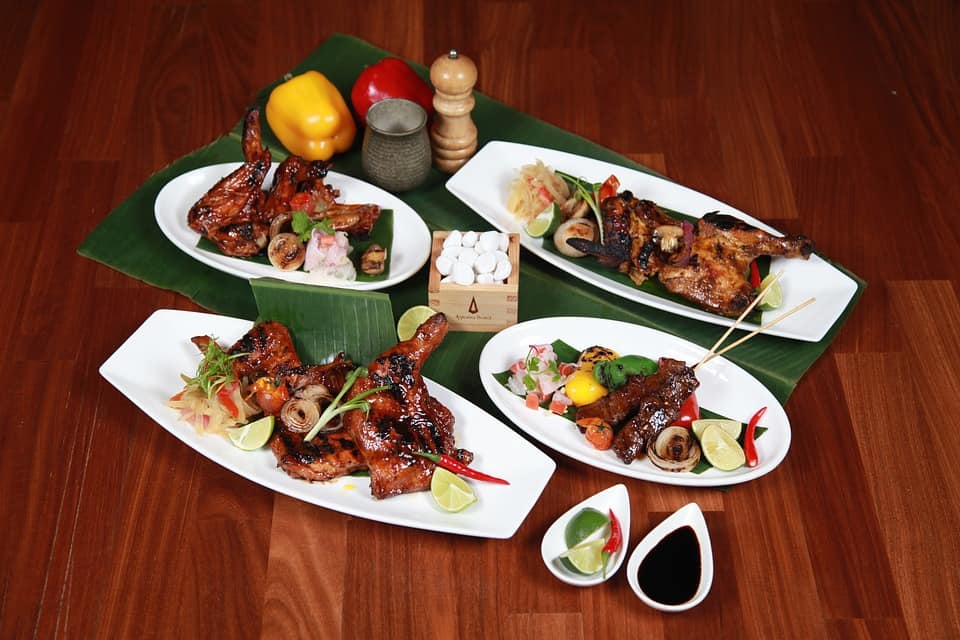
If the safety of the Philippines is unfairly maligned, it has to be said that the food probably isn’t. We love Filipino food but that’s because we love barbequed meat. If that’s your idea of great food – you’re in luck.
However, if you want fruit, vegetables, salads, etc. you’re going to have to make them at home because no self-respecting Filipino restaurant is going to serve that kind of stuff. In fact, the majority of places that don’t sell BBQ, sell nothing but junk food. McD’s, Burger King, KFC, Jollibee, etc. dominate the landscape.
It’s also not as cheap to eat out in the Philippines as it is in the rest of Southeast Asia. Only the most desperate of souls would eat street food in the country. It’s awful and liable to give you food poisoning.
So, you’re looking at $2-$3 minimum in a fast food joint and 2-3 times that in a BBQ or local restaurant. International food is available but a fairly substantial price premium – expect to pay $10 or more for fairly simple fare.
Supermarkets are also full of incredibly bad food. If it can be processed and frozen, shoved in a vacuum-sealed bag or tinned – it will be there. We’ve never seen so much added fat, sugar, and preservatives in our lives. They’re generally reasonably priced, though.
Fine dining is relatively rare but when you find it, it’s much better value for money than normal restaurants. A meal for two in Cebu’s best restaurant came in at under $60 including drinks.
Local markets are an option but are notorious for price gouging foreigners and can be a haven for pickpockets.
If you got used to 7-11 in Thailand delivering excellent food at a low price, prepare to be deeply disappointed at the dreadful and expensive stuff they sell in the Philippines.
However, if you search around – there are exceptions to these rules and you can find some amazing food which is sensibly priced pretty much anywhere. We heartily recommend Andok’s and its roast chicken dinners, for example.
For drinkers, the picture is much rosier. Not only are Filipino lagers quite drinkable (San Miguel is the internationally known brand, but Red Horse is just as popular on the ground) but they’re also cheap. Expect to pay 50 cents in a store and $1-$2 in a bar. Imported beers are about $1 more.
Wine is expensive but spirits are not, and you can buy all the international brands of spirits for ridiculously low prices and local spirits are practically free (a bottle of local rum or gin will cost you about $2-$3).
The Philippines occasionally restricts alcohol sales for festival days and on election days. These restrictions are announced in advance in the local media. Filipinos are generally law-abiding on this front, so if you want to drink on these occasions, you’ll need to stock up at home.
Safety And Security For Digital Nomads In The Philippines
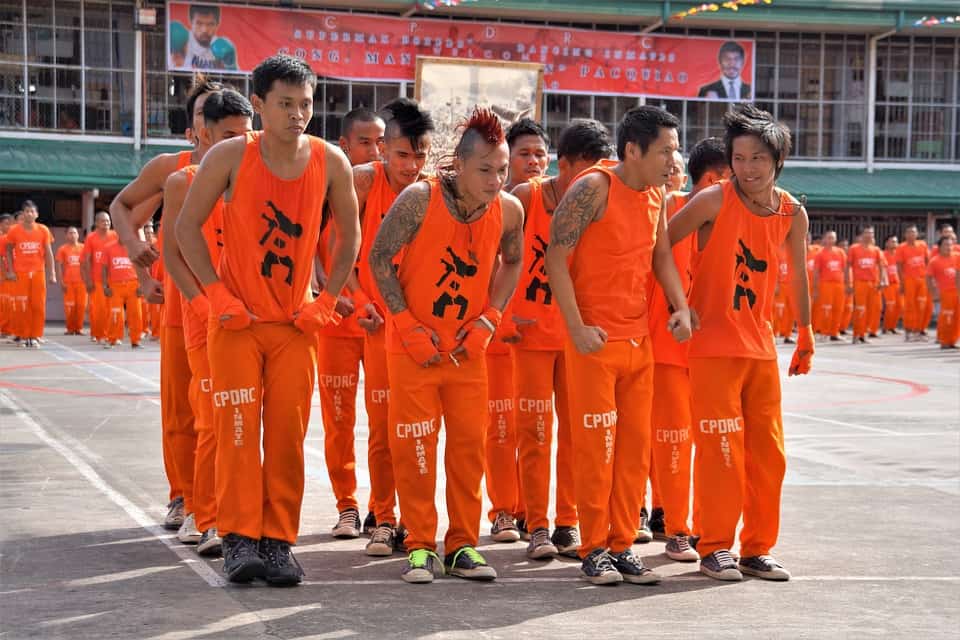
The fears of many digital nomads and travelers about their safety and security in the Philippines are vastly exaggerated but that doesn’t mean that you can afford to be blasé about things either.
Single women are likely to remain unmolested when moving through the Philippines and as always the most likely venue for sexual assault is somewhere were drunk people congregate, particularly drunk Westerners. However, we wouldn’t advise being alone on the streets late at night either.
Street crime is common in the Philippines but only in slum districts. There was a time when snatch and grab thefts plagued most major cities and tourist resorts, but CCTV and reasonably efficient policing has seen an end to this.
Even in the slums, you’ll be safe during daylight hours but at night, stay away. Even if you have nothing worth stealing, you are likely to be targeted and if you have nothing to steal, they may assault you because they think you’re hiding something.
KTVs and Karaoke in shopping malls are safe places but outside of these areas, they may be a front for Japanese or Korean prostitution venues – these places can become very expensive, very fast. They’re best avoided.
Nearly all shops have visible pricing. Haggling is not expected in places with stickers on the items and it won’t be welcomed either. Markets may not have visible pricing and it’s not unknown for foreigners to be on the receiving end of price gouging in these places.
Pickpocketing in busy venues is a real concern, however, and you should keep a close eye on your phone, camera, bag, etc. in crowds. Don’t be afraid to wear a backpack on your front in tight spaces – it’s better than having stuff stolen.
Habal-habal (the ubiquitous motorcycle taxis) are a rip off compared to Grab (the Uber equivalent in South East Asia) but this is true whether you are local or foreign.
ATM skimming is rare and as always, the best way to avoid it is to use an ATM in a mall or bank underneath a security camera. Always check the card slot and keypad for signs of tampering before you put your card in the slot.
Clothing And Footwear In The Philippines

The Philippines is the one place in the region where the “larger than the average Asian” Westerner can easily shop for clothes. Not only do all the secondhand shops (which are legion in malls and Filipino neighborhoods) cater to bigger folks but so do the department stores.
Clothing is not as cheap as it is in Indochina, but it is fair value for money in most places.
Those with large feet will be pleased to know that the Payless chain of shoe stores carries large sizes – though, admittedly, in a fairly limited selection.
Ordering online, however, is a hit and miss experience and Filipino postal and courier services can be charitably described as awful. You may have to visit an office miles away from your home to pick up any deliveries.
If your delivery is from overseas, you may also have to pay tax on that delivery at the collection point. In our experience, this tax is randomly assigned and can be nothing or can be quite substantial.
We’d advise digital nomads to bring the things they need to the Philippines, if possible, rather than trying to buy it online after they arrive.
Health Care In The Philippines For Digital Nomads

Digital nomads in need of healthcare will be pleased to know that healthcare is above average for a country as poor as the Philippines. In fact, a large chunk of the nurses in your own country have probably trained in the Philippines.
If you have an ACR card (see above in the visa section) you can also apply to PhilHealth. This is a very, very basic form of health insurance offered to Filipino nationals. It rarely covers all the expenses of any treatment but can give you a slight discount on services. Some swear by it, others say it’s worthless.
We strongly suggest that you understand the difference between travel insurance and health insurance and buy the right product for your needs. Being uninsured in Asia in the event of a serious health issue is no laughing matter.
All healthcare available to foreign nationals is private healthcare and it’s a little more expensive than it would be in Thailand and the hospital facilities themselves are not as modern. We’d be happy to use the Philippines in an emergency but if you’re looking for medical tourism – we’d suggest Thailand is a much better location.
Dentistry facilities, in our experience, are not great. Treatment is also quite expensive for Southeast Asia. We’d use them for cleanup or some basic work but Cambodia remains, hands down, the best value in the region and for major work, you can save a fortune by heading to Siem Reap or Phnom Penh.
Illegal Drugs In The Philippines
In case, you’ve been living under a rock – the Philippines has declared a very literal war on drugs. Drug dealers and users can be shot on sight by police or members of the public and the killers will not be prosecuted.
If you’re “lucky” enough to be arrested, sentencing is harsh, there is no chance of bribing your way out of trouble and Filipino jails are among the worst in the world.
If that doesn’t convince you not to do drugs in this country, we’re not sure what will. Seriously, South East Asia as a whole is a bad place for this kind of tourism but only the suicidally stupid come to the Philippines for chemical recreation.
You can’t say that we didn’t warn you.
Dating In The Philippines For Digital Nomads

The Philippines is, we think, the best possible place to date locals in the whole of Southeast Asia. This is, in part, because the locals all speak English. There’s no language barrier to dating or asking someone out.
It’s also, in part, because the Philippines’ culture is better aligned with Western cultures (that’s not to say there are no differences – there are, and they are legion) than some of the other cultures in the region.
And it’s also because the Philippines is relatively under-visited and the sexpats of Thailand, etc. haven’t had a chance to put the locals off Westerners, yet.
Digital nomads will be pleased to learn that digital dating exists too. Tinder tends to be used by “working girls” but local alternatives such as PinaLove have plenty of ordinary folks looking for love in amongst the occasional “lady of negotiable affection”.
Filipino relationships tend to follow fairly strict societal role patterns. Women are generally expecting not to work and to tend the house. Men, on the other hand, are expecting to work but not to tend the house. It can be a bit challenging breaking these patterns and it requires some patience to get there.
There are also small numbers of mainly retired expats dating prostitutes in the country. Our warning remains consistent on this – don’t date prostitutes. You wouldn’t do it at home and it’s not a good idea just because you’re abroad. Things rarely end happily for these couples.
There don’t appear to be very many long-term female foreign expats in the Philippines but those we know are in happy long-term relationships with local guys. This is in stark contrast to other nations in the region where you rarely see this.
Digital nomads will be pleased to learn that the average Filipino would love to leave the country and travel with them. However, they are probably going to need your financial support to do so and be warned, it is not easy for a Filipino to pass through immigration at their own borders. You may have to spend quite a bit for them to be able to leave the Philippines.
General Shopping In The Philippines For Digital Nomads
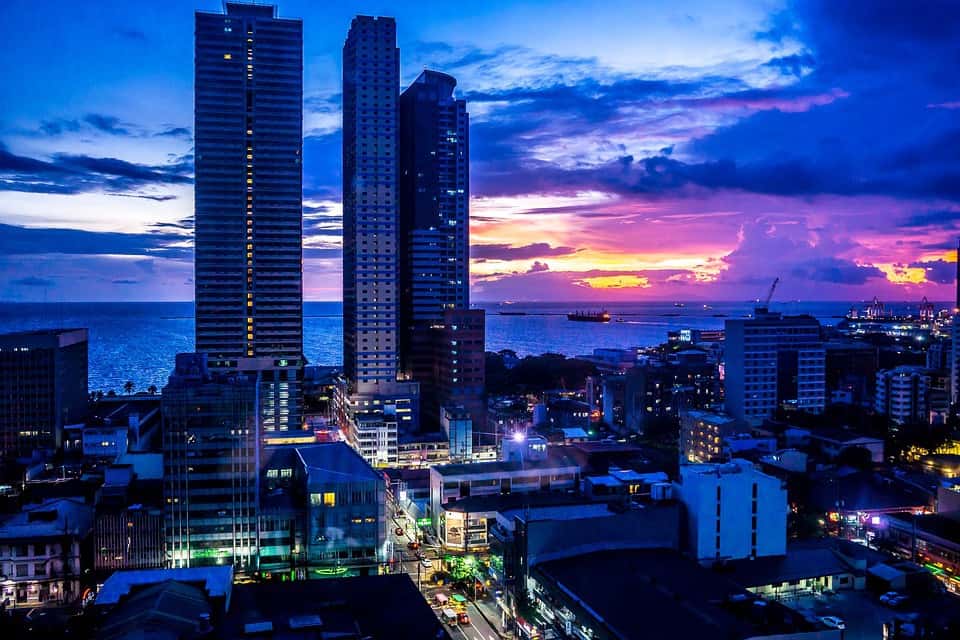
The Philippines models itself on the United States and nothing makes that clearer than its mall culture. The Mall of Asia is one of the world’s largest malls (it’s in Manila) and you can barely move in a Filipino city without bumping into a shopping mall.
You can buy nearly everything you want in the Philippines without too much hassle, however, book shops are quite poor compared to Indochina and prices of almost everything will be higher in the Philippines than elsewhere in the region.
We don’t recommend online ordering from outside of the Philippines (because of dire delivery services and high taxes) and in the Philippines, we strongly recommend only ordering online if you use cash on delivery services.
Religion In The Philippines
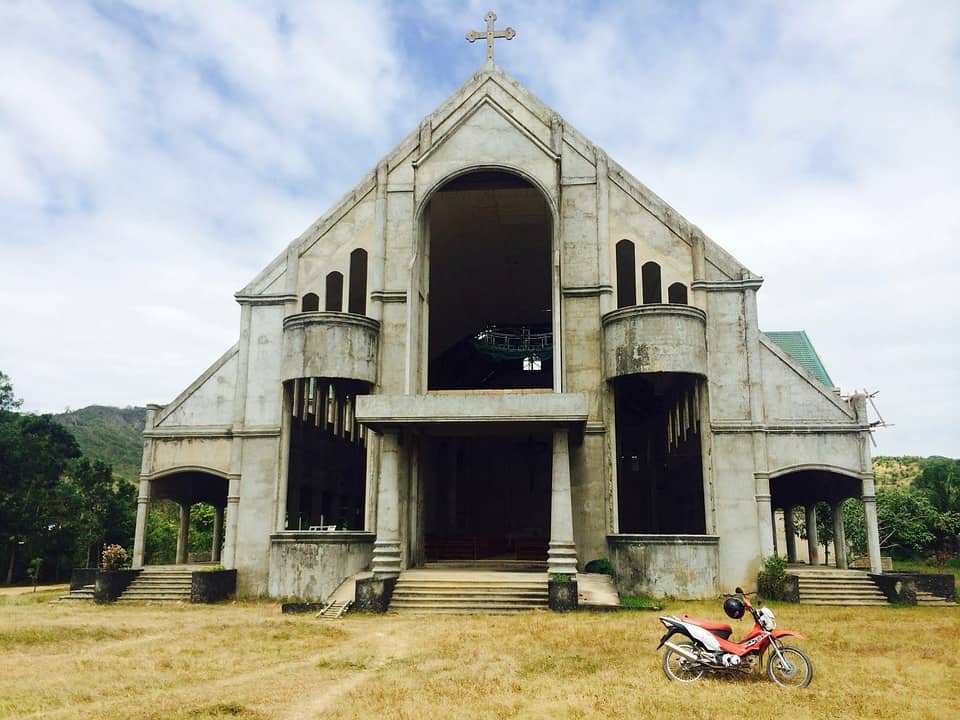
For the main part, the Philippines is a firmly Catholic nation. That means it celebrates all the Christian holidays, however, they may have different importance to the way they are celebrated in the West.
Christmas, for example, is a minor festival and many saint’s days are bigger causes for celebration. Every town, city, and region of the Philippines has at least one (often many) affiliated saint(s) and there is usually a local holiday (sometimes official, sometimes not) for each of their saint’s days.
Catholicism seeps into every aspect of Filipino life (though to a lesser extent so does the desire to be American which while not strictly speaking a religion – it comes close) and people are generally modest and law-abiding.
The few bad apples involved in unpleasant activities give the rest of the nation an undeservedly bad reputation.
It is OK to discuss religion with Filipinos as they are, generally, open-minded and respectful but it is not OK to be overtly critical of religion or politics and to be pushy about it. Filipinos are a proud people and it’s best to be polite and respect their feelings.
If you would like to join a church service anywhere in the Philippines you will normally be warmly welcomed into the congregation.
The one exception to the Catholic majority is the special administrative region of Mindanao. This is a Muslim stronghold and one which has long been at odds with the Catholic majority. Most Western nations recommend you avoid all travel to this region.
Why? Because there have been kidnappings and worse, beheadings, of foreign nationals by Muslim extremist groups. It’s worth noting that these tend to be of two groups of people: Christian missionaries and oil company execs. We know of plenty of people who’ve traveled that region extensively without issue.
If the rest of the Philippines is conservative, this is doubly true down in Mindanao. Think very carefully if you decide to visit about wearing appropriate clothing and be sure to conduct yourself appropriately in public.
Sadly, we didn’t get a chance to spend any time in Mindanao while we were in the Philippines but as it’s Megan’s home country, I am sure we’ll be back one day.
General Thoughts On The Philippines For Digital Nomads

The Philippines is an awesome place to be a digital nomad except for the dreadful issues with the internet. If you don’t need 24/7 access you can probably take your chances and visit wherever you want to be but if guaranteed connectivity is essential to your business – stick to Cebu and Manila and be close to a co-working space for a backup if things go wrong at home (and they will go wrong at home).
The people are among the friendliest and most welcoming you will meet anywhere. And while it is not 100% safe, common sense can keep you safe, we’ve never even exchanged a cross-word with a random Filipino.
Manila is one of the world’s most interesting cities if you can put up with the traffic and the more limited food options. It has much more to do than Bangkok or Ho Chi Minh, for example.
Cebu gives you a completely different pace of life. It’s a little rougher around the edges than Manila but it’s also a lot less polluted.
Davao, over in Mindanao, is becoming a nomad favorite due to the safe feeling of the city and the low cost of living. We haven’t been but our contacts say, it’s pleasant but a bit dull at times.
Other great options include Baguio (up in the mountains and always cool – a welcome change in SE Asia), Bohol (beautiful chocolate hills and tarsiers), Boracay (it’s clean again and back to being a tropical paradise) and Dumaguete (very popular with Western retirees).
Thanks to an insanely friendly visa regime – staying anywhere in the Philippines is easy and fun.
Sure, the Philippines, like any developing nation, isn’t perfect but where else can you drink beers for less than a buck in an English speaking country full of beautiful beaches and a proud culture?
For most digital nomads the Philippines is likely to be a 2nd or 3rd destination in South East Asia and we think many of them will want to stay awhile once they take the plunge.
